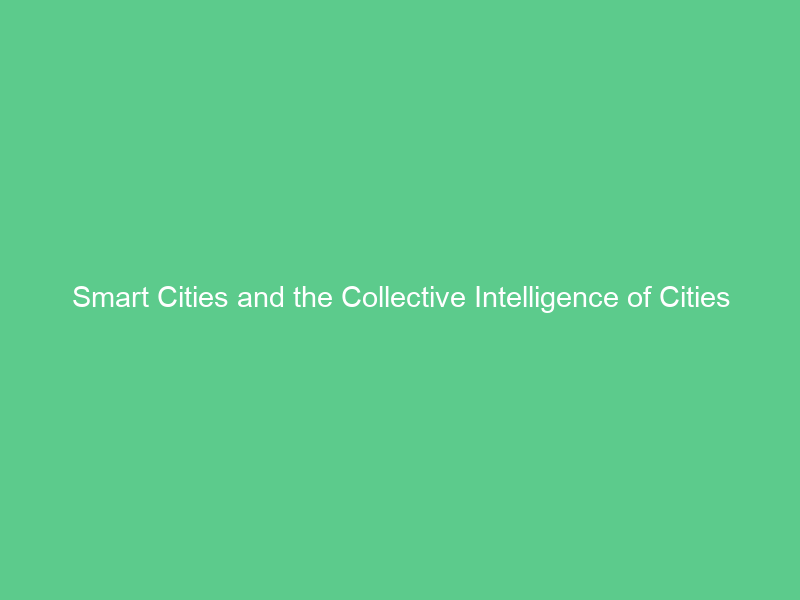Cities and citizens want to maximize services and enhance their quality of life, but collective intelligence in cities is an untapped source.
Smart technology puts intelligence to work, helping cities to be more efficient behind-the-scenes while responding more rapidly to changing demands and improving quality of life for residents.
1. Smart grids
Smart grids form the backbone of intelligent infrastructure in any city. They help maximize available resources while mitigating climate impacts and enhancing city life.
These networks enable smart devices to communicate via sensors, collecting and transmitting information regarding demand, availability from multiple sources and the health of components such as generators. Citizens can track their energy use over time and make more efficient choices that lead to lower utility bills.
Smart grids can also power initiatives such as rooftop solar, demand response, microgrids and customer-owned power generation systems that provide local government leaders with a considerable return on their investments during these financially austere times. But for such applications to succeed in cities with limited resources available to them, a pervasive network must exist that is open, scalable and capable of offering 24/7 reliability to support various uses – otherwise success cannot be ensured.
2. Smart transport
Transport is at the core of smart cities, providing optimal public transit, road safety, and parking management services to create better travel experiences in local communities. Smart technology enables us to take this concept a step further with improved local travel experiences enabled by optimized public transit services, optimized road safety management protocols, and parking management software solutions.
Real-time traffic monitoring provides real-time insight into what is occurring on city streets, enabling quicker incident response times and optimizing traffic flow optimization. It can also reduce energy costs while contributing to sustainability goals.
Smart waste management systems can send data directly to trash collection companies so that pickups can take place when necessary, rather than pre-planning routes, while smart car chargers inform drivers if there are spaces at charging stations.
Here are just a few digital solutions that address critical quality-of-life concerns such as air pollution, traffic congestion and long commute times. Cities using such applications can increase efficiency while improving citizen satisfaction. They can also help cities build resilience to climate change and geopolitical uncertainties – ultimately leading to lower utility bills, more convenient service access points and enhanced community connectivity.
3. Smart waste management
Smart waste management is an integral component of city infrastructure that promotes sustainability and resilience, using technology to streamline waste collection while opening opportunities for recycling and recovery within a circular economy model.
Sensors installed into bins monitor waste levels constantly, providing central systems with accurate real-time data to track and report. This data facilitates smart routing that optimizes waste collection routes, scheduling and efficiency; as well as ensure that trash collection only occurs when full. This ensures savings for municipalities, waste management companies and the vehicle fleet; both costs savings as well as reduced fuel consumption and wear and tear on vehicles are reduced through timely collection.
Smart waste management can also encourage public participation in environmentally-friendly behavior. Cities can foster engagement and environmental awareness through apps and social media platforms that show results of recycling efforts by the public, which helps communities remain committed to leading sustainable lifestyles while mitigating any detrimental effects of urbanisation on the environment.
4. Smart security
Public safety is of utmost importance in any city, and effective smart cities prioritize it by integrating surveillance cameras and data streams into a centralized security platform that all municipal departments can use for real-time access to real information that could assist with everything from identifying hazards to creating disaster recovery plans.
Low Power Wide Area Network (LPWAN) technologies such as LTE Cat M, NB-IoT, LoRa, and Bluetooth make all this possible, offering cost efficiency and widespread connectivity solutions suited to smart city applications.
Informing citizens about the advantages of smart technologies promotes participation and social engagement, increasing adoption rates and creating cities tailored to citizens’ needs. Furthermore, increasing citizen awareness about them allows for improved implementation and maintenance, helping avoid issues from occurring in these solutions. Smart city infrastructure is also revolutionizing energy sectors by adopting renewable-powered systems with greener design elements; including using eco-friendly materials for construction as well as energy reshaping initiatives or waste-to-energy projects.

